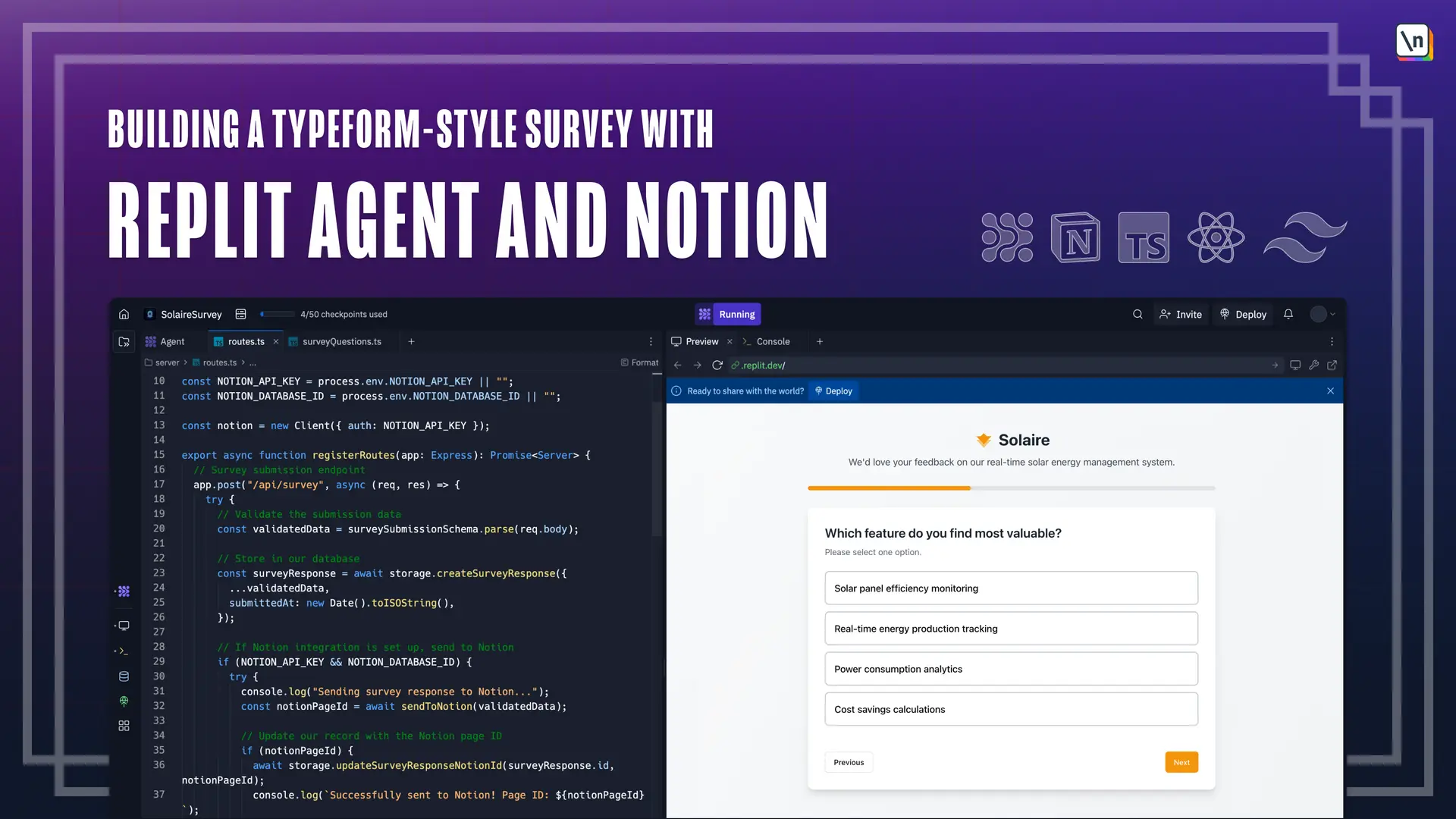Introduction
This lesson preview is part of the Building a Typeform-Style Survey with Replit Agent and Notion course and can be unlocked immediately with a \newline Pro subscription or a single-time purchase. Already have access to this course? Log in here.
Get unlimited access to Building a Typeform-Style Survey with Replit Agent and Notion, plus 90+ \newline books, guides and courses with the \newline Pro subscription.

[00:00 - 00:12] Welcome everyone to today's workshop on building a type form style survey with repell agent and notion. So in today's workshop, you'll be learning how to build a survey app that presents questions one by one with smooth animations with repell agent and notion.
[00:13 - 00:20] This app will be built using TypeScript and react for today's agenda. You'll first be introduced to repell agent.
[00:21 - 00:26] So basically we'll be answering the question of what is repell agent? What's the difference between a coding assistant and a coding agent?
[00:27 - 01:01] Answering these sort of questions, then we'll jump into learning how to effectively prompt repell agent so that the app that's generated better matches your vision, then we'll jump into a live demo of repell agent. We'll be building a type form style survey with repell agent from the beginning , starting with a prompt and ending with a beautiful survey app that lets users answer questions one by one, jumping from one question to the next via smooth animations and storing those responses eventually in an ocean database, then we'll be jumping into the code that's produced by repell agent.
[01:02 - 01:10] So we'll be covering all of the files and directories that are generated by repell agent. It's extremely important to understand the code that's being generated.
[01:11 - 01:21] Since sometimes there might be unintended bugs that are introduced by repell agent and sometimes repell agent might not be able to resolve those bugs by itself. So you'll want to understand the code.
[01:22 - 01:31] So this way you can possibly guide it to resolve these sort of bugs. It's also especially important to understand the code if you plan on deploying the app to a production environment.
[01:32 - 01:49] And then we'll be creating a notion integration with the proper permission so that you can actually connect the survey app to a notion workspace. And you also need to be able to create a notion database on the notion workspace so that you'll have a place to store the survey responses.
[01:50 - 01:59] The notion database will be placed in a page that you connect the integration to. So this way the survey app will have the necessary permissions to add rows to the notion database.
[02:00 - 02:03] Let's start with the question of what is repell agent.